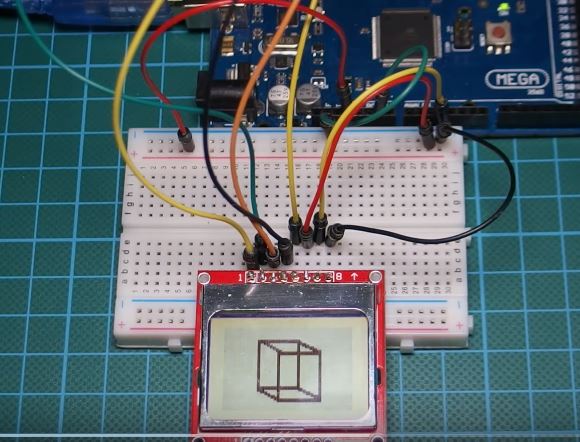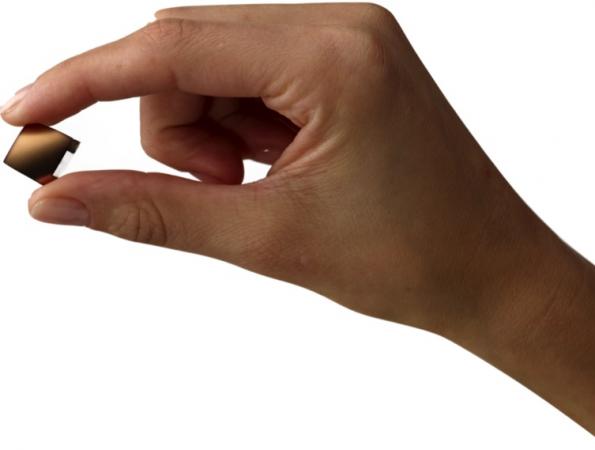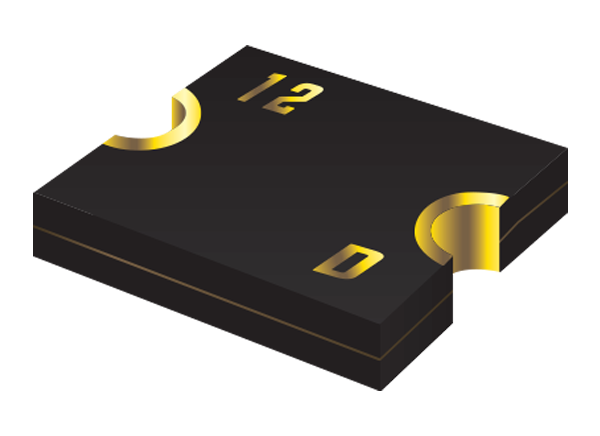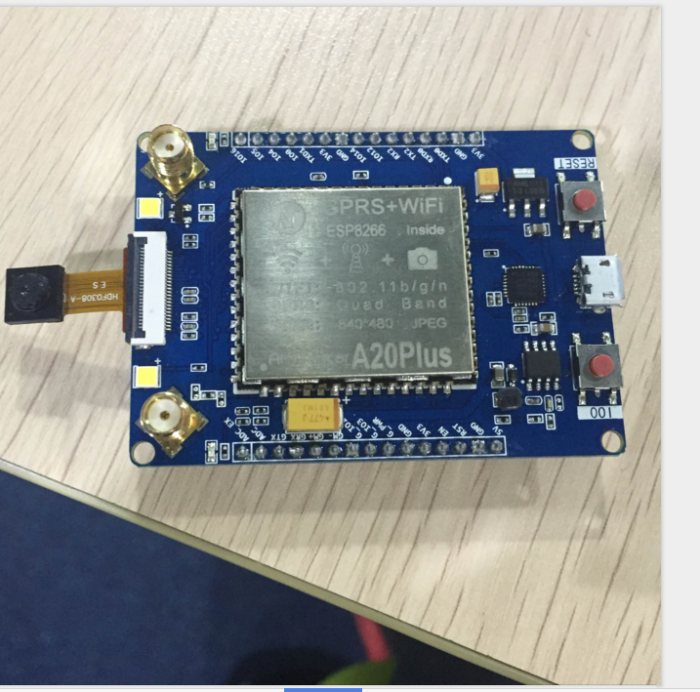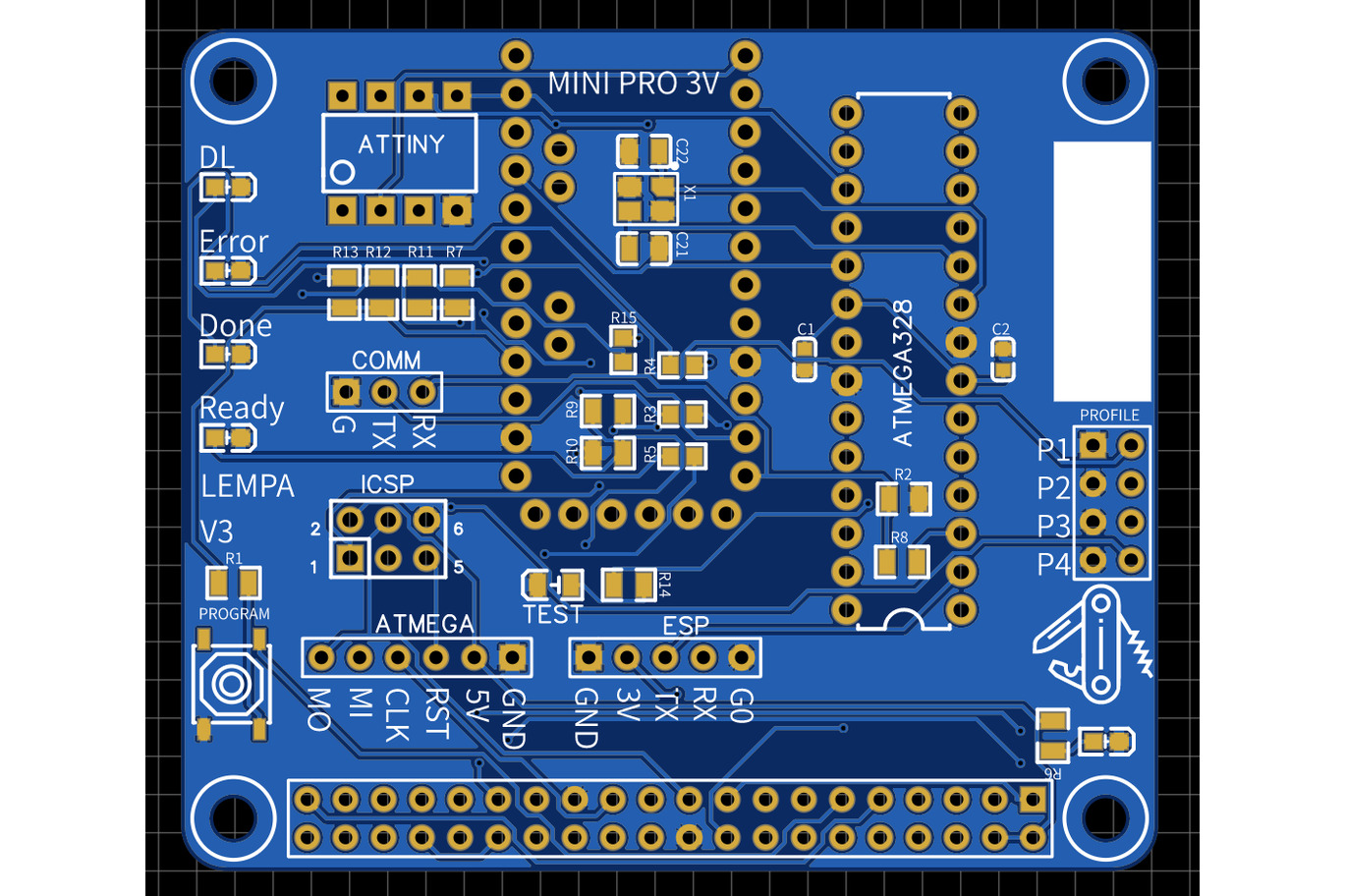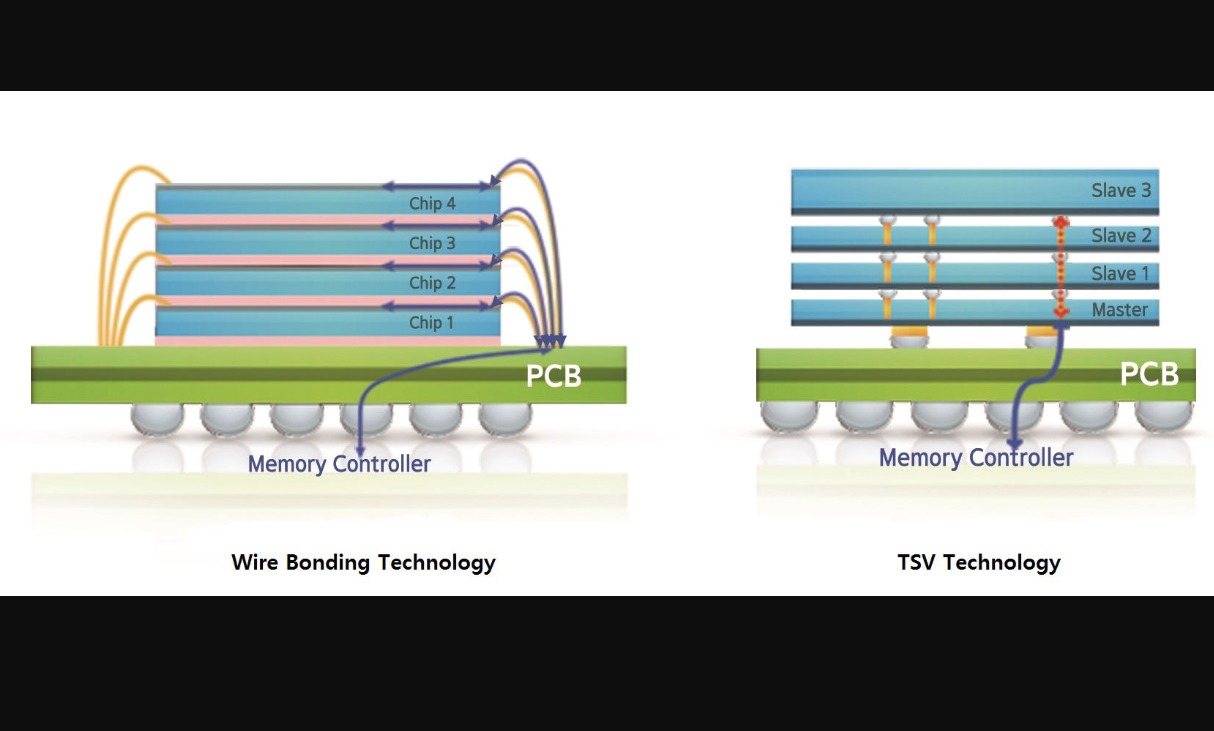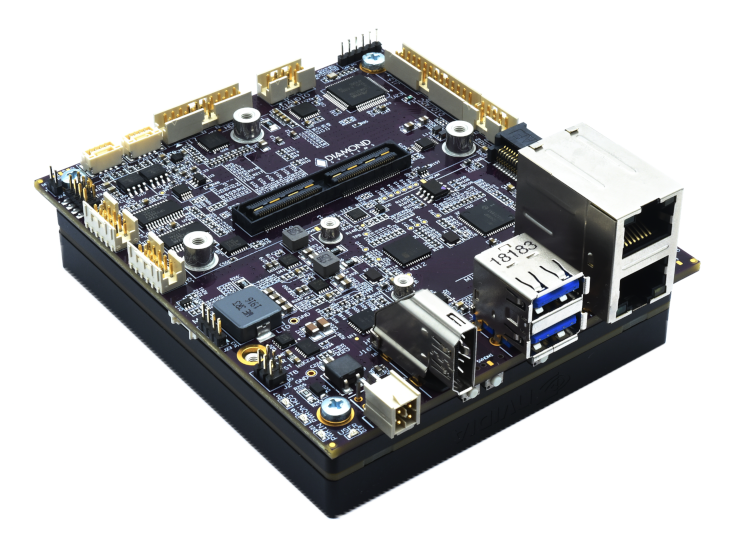
Diamond Systems has unveiled a Stevie carrier board for Nvidia’s high-end Jetson AGX Xavier module. Diamond also promoted some other Jetson carriers and embedded systems, which all ship with Linux BSPs. They include Diamond Systems’ Elton, also for the Xavier, the Jethro and Ziggy carriers, both of which support the earlier Jetson TX2 and industrial-temperature Jetson TX2i. Diamond also included the Ziggy-based ZiggyBox mini-PC and its Jetbox-Nano enclosure for Nvidia’s Jetson Nano Development Kit for the Jetson Nano module.
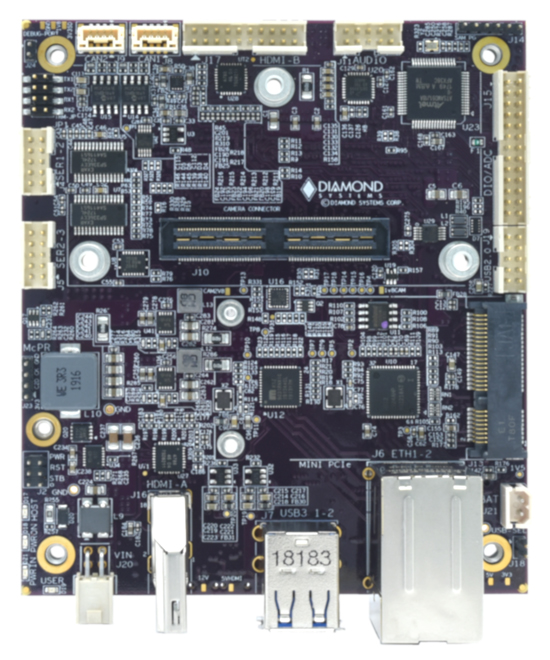
At 105 x 92mm, the Stevie board is slightly larger than the 100 x 87mm Jetson AGX Xavier module. The high-end Nvidia Xavier has 10x the energy efficiency and more than 20x the performance of the Jetson TX2. It features 8x ARMv8.2 cores and a 512-core Nvidia Volta GPU with 64 tensor cores and 2x Nvidia Deep Learning Accelerator (DLA) engines. Available also is a 7-way VLIW vision chip, and also a 16GB 256-bit LPDDR4 RAM and 32GB eMMC 5.1. Stevie enables a host of real-world ports for easier connectivity. coastline ports features includes an HDMI port, 2x Gigabit Ethernet, and 2x USB 3.1 ports. The block diagram available suggests there’s another HDMI port, which probably serves as an input interface.
The Stevie board enables connectors for up to 8x MIPI-CSI HD cameras or 4x 4K cameras. It is also equipped with a micro-SD slot plus mini-PCIe and M.2 slots supporting I/O add-ons and SSD storage. Additional features include 2x CAN, 4x serial, an audio interface, and a 9-20VDC input. Stevie’s MCU-driven data acquisition circuit has a 12-bit A/D up to 1MSPS, 12-bit D/A, and 3.3V GPIO. Diamond offers support for these interfaces with a free C-language programming library, a GUI control panel for “convenient control and monitoring of real-world processes and also a ready-to-run data logging capability.”
The CTI Rogue carrier for the Xavier has a similar set of I/O. It enables more USB ports and M.2 slots but is limited to 6x CSI cameras. Let’s take a look at the other Jetson carriers and embedded systems promoted.
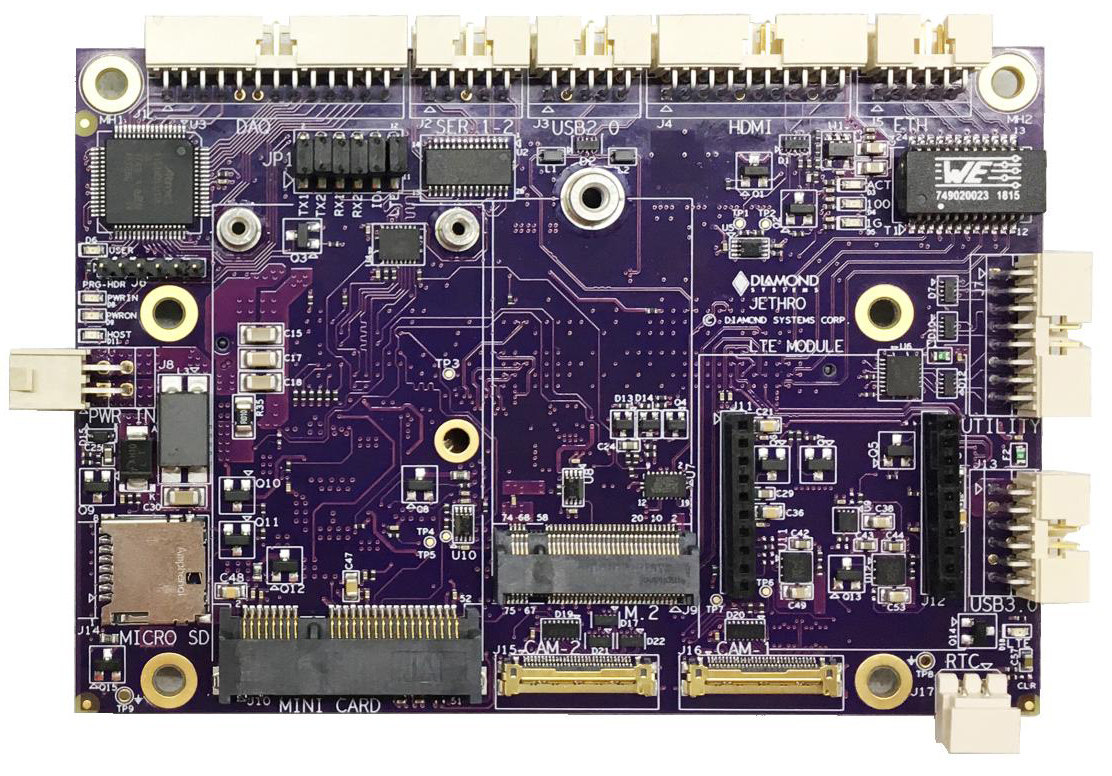
Jethro
Jethro’s carrier extends the mid-range hexa-core Jetson TX2 module with 256-core Pascal graphics, and also the similar Jetson TX2i, which enables-40 to 85°C and 10-year support. The two modules feature 8GB LPDDR4, 32GB eMMC 5.1, and 802.11ac WiFi and Bluetooth. The 107 x 76mm Jethro has the same temperature range of the TX2i. It enables headers with latching connectors, which improves ruggedization. Available also is 9-18VDC (TX2) or 5.5-18VDC (TX2i) DC input.
Jethro carrier features a microSD slot and an M.2 2242 socket for up to 256GB SSDs. It is further equipped with a mini-PCIe slot that supports Nimbelink Skywire cellular modules. Interface options include single GbE, USB 3.0, and HDMI headers plus 2x USB 2.0, 2x RS-232, and 2x 4-lane CSI camera inputs. Available also is a DAQ array and software stack with 12x GPIO much like the Stevie and Elton.
Ziggy, ZiggyBox, and Jetbox-Nano
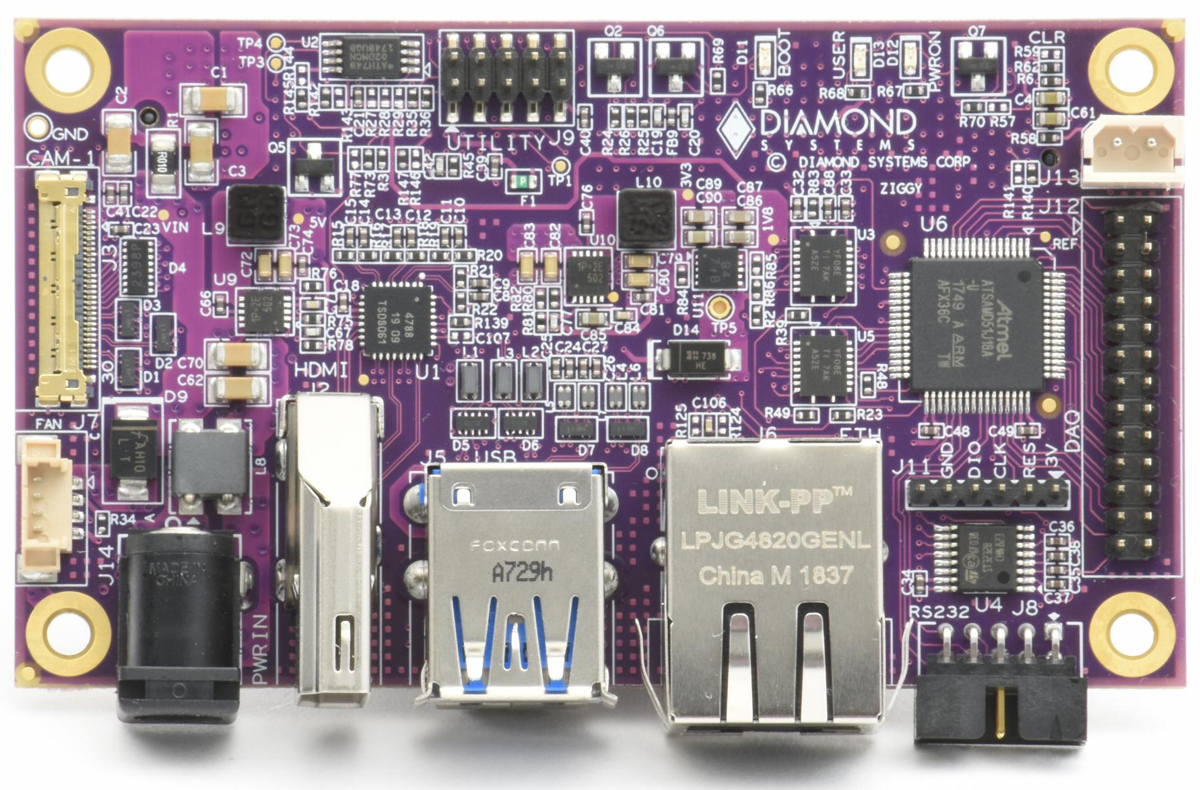
The Ziggy has conventional coastline ports, and has a TX2-like 87 x 50mm footprint. Unlike Stevie, it supports -40 to 85°C. Coastline ports include GbE, USB 3.0, USB 2.0, micro-USB OTG, and HDMI. interface features include 2x RS-232, a single 4-lane CSI connector, and a utility connector with I2C, UART, power, and reset pins. Available also is a DAQ layout and power inputs which are identical to Jethro’s. Additionally, a microSD slot is on the flipside.
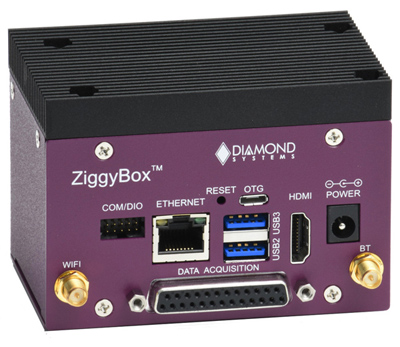
The ZiggyBox system exposes all real-world ports and incorporates COM/DIO and DAQ ports. It features WiFi and Bluetooth antennas for the TX2/TX2i’s wireless module, with a heat sink, and support for an optional fan.
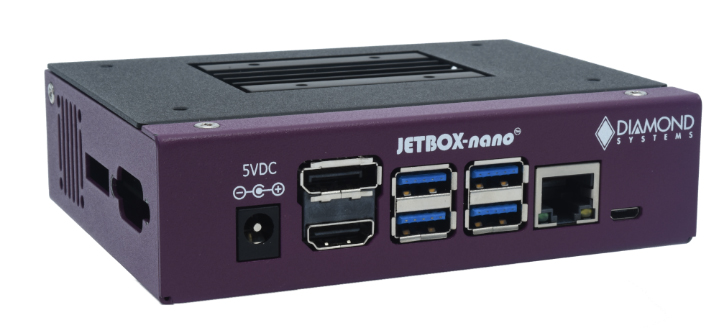
Diamond offers a Jetbox-Nano enclosure kit for Nvidia’s $99 Jetson Nano Development Kit. At 125 x 95 x 34mm, the steel enclosure is “rugged” and “low-cost.” Its standard ports are visible on one side, and the left side enables access to the serial port and camera flex cable port. However, on the right side, there is a GPIO port and optional connector and on the rear is a programming button for software updates. Finally, there is a DIN-rail mount available.
Elton
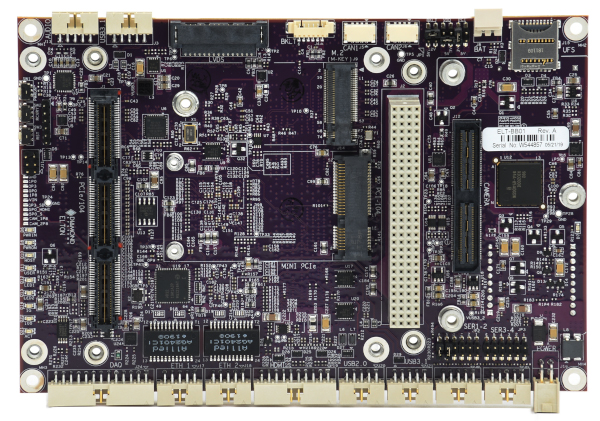
According to Diamond, the Elton board is the only Nvidia Jetson carrier that features a PCI/104-Express expansion socket. Elton is aimed at direct deployment, and has a 100 x 87mm size. According to Diamond, the -40 to 85°C. tolerant system is designed for “high performance computing and AI applications in mobile and harsh environments.”
Elton’s PCI/104-Express connector supports PCI-104, PCIe/104 type 1 (x8 lane), and PCIe/104 OneBank (4x x1 lanes). The M.2 socket available, supports up to 256GB PCIe x4 NVMe storage, and a USB-based LTE socket supports NimbeLink SkyWire cellular modems. Elton features an industry-standard MIPI-CSI camera socket, which enables up to 8x HD or 4x 4K cameras. Additional interfaces include 2x GbE, 2x USB 3.1, 2x USB 2.0, 4x RS-232/422/485, and 2x CAN, plus. Media features includes HDMI, LVDS, and audio interfaces. Available also is a DAQ interface, software stack just like Stevie’s, with 6x ADC, 2x DAC, and 13x GPIO.
According to Diamond, all the connections use pin headers compatible with common latching and non-latching cables, thereby improving shock and vibration resistance. Finally, there’s also a UFS flash socket, a heat spreader, battery support, enclosure mounting tabs, and series of cable and connector options.
There’s no pricing or availability information provided for the “preliminary” Stevie carrier for the Jetson AGX Xavier. The other boards and systems are available now without pricing. More information can be found on Diamond’s Stevie, Elton, Jethro, Ziggy and ZiggyBox, and Jetbox-Nano product pages.





